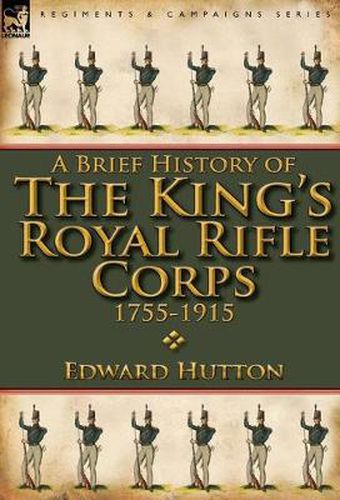Readings Newsletter
Become a Readings Member to make your shopping experience even easier.
Sign in or sign up for free!
You’re not far away from qualifying for FREE standard shipping within Australia
You’ve qualified for FREE standard shipping within Australia
The cart is loading…






This title is printed to order. This book may have been self-published. If so, we cannot guarantee the quality of the content. In the main most books will have gone through the editing process however some may not. We therefore suggest that you be aware of this before ordering this book. If in doubt check either the author or publisher’s details as we are unable to accept any returns unless they are faulty. Please contact us if you have any questions.
Riflemen in green Popular historical fiction has brought focus to Wellington’s Green jacketed riflemen. The hero of those novels is, as most readers know, a member of the 95th regiment. The subject of this book concerns the history of that regiment’s brother, and indeed senior, Rifle corps, the 60th. The two regiments can be differentiated by the red collar and cuffs of the 60th. This regiment had its origins in the Seven Years War as it was fought in the New World-the French and Indian War-when those in the regiment were principally hardy backwoodsmen well suited to fighting in the terrain of the eastern woodlands. Styled the ‘Royal Americans’ it recruited among American colonists who were, of course, fighting to preserve their homelands. The regiment, which now forms part of ‘The Rifles’ in the modern day British army, fought with distinction throughout the Napoleonic Wars particularly under Wellington in the Iberian peninsula. The many small wars of the 19th century during Queen Victoria’s long reign provided ample opportunity for the 60th’s particular style of skirmishing warfare. This short, historical overview enables students of British rifle regiments to gain an appreciation of the services of the King’s Royal Rifle Corps (as it was styled at the time of first publication of this book) up to 1915.
Leonaur editions are newly typeset and are not facsimiles; each title is available in softcover and hardback with dustjacket.
$9.00 standard shipping within Australia
FREE standard shipping within Australia for orders over $100.00
Express & International shipping calculated at checkout
This title is printed to order. This book may have been self-published. If so, we cannot guarantee the quality of the content. In the main most books will have gone through the editing process however some may not. We therefore suggest that you be aware of this before ordering this book. If in doubt check either the author or publisher’s details as we are unable to accept any returns unless they are faulty. Please contact us if you have any questions.
Riflemen in green Popular historical fiction has brought focus to Wellington’s Green jacketed riflemen. The hero of those novels is, as most readers know, a member of the 95th regiment. The subject of this book concerns the history of that regiment’s brother, and indeed senior, Rifle corps, the 60th. The two regiments can be differentiated by the red collar and cuffs of the 60th. This regiment had its origins in the Seven Years War as it was fought in the New World-the French and Indian War-when those in the regiment were principally hardy backwoodsmen well suited to fighting in the terrain of the eastern woodlands. Styled the ‘Royal Americans’ it recruited among American colonists who were, of course, fighting to preserve their homelands. The regiment, which now forms part of ‘The Rifles’ in the modern day British army, fought with distinction throughout the Napoleonic Wars particularly under Wellington in the Iberian peninsula. The many small wars of the 19th century during Queen Victoria’s long reign provided ample opportunity for the 60th’s particular style of skirmishing warfare. This short, historical overview enables students of British rifle regiments to gain an appreciation of the services of the King’s Royal Rifle Corps (as it was styled at the time of first publication of this book) up to 1915.
Leonaur editions are newly typeset and are not facsimiles; each title is available in softcover and hardback with dustjacket.